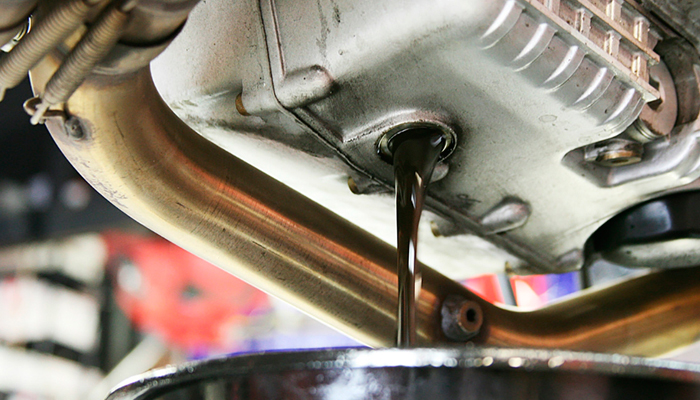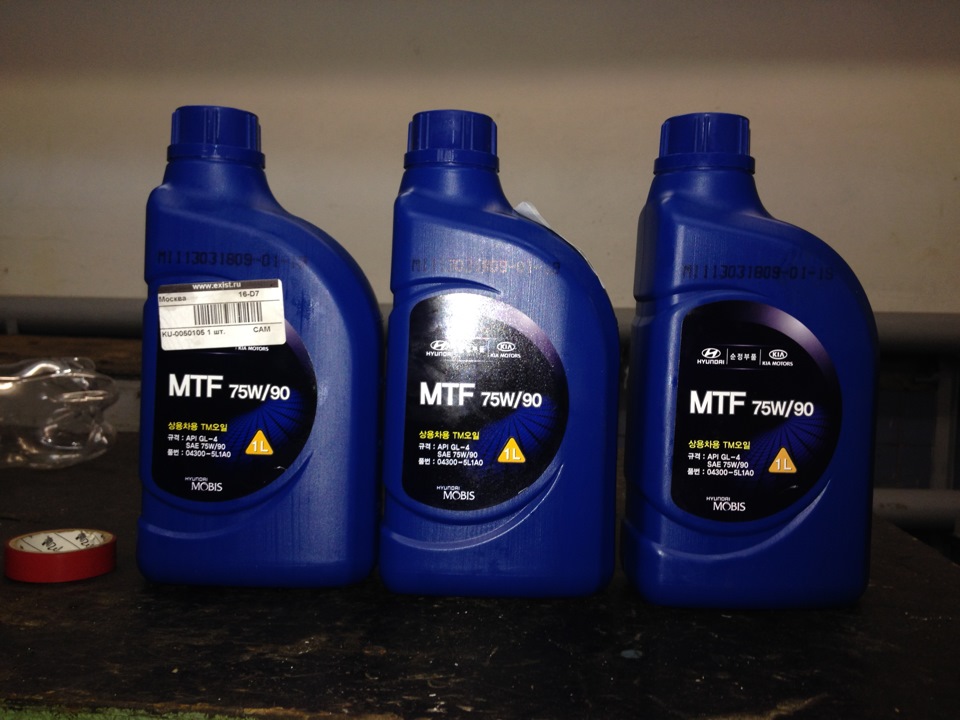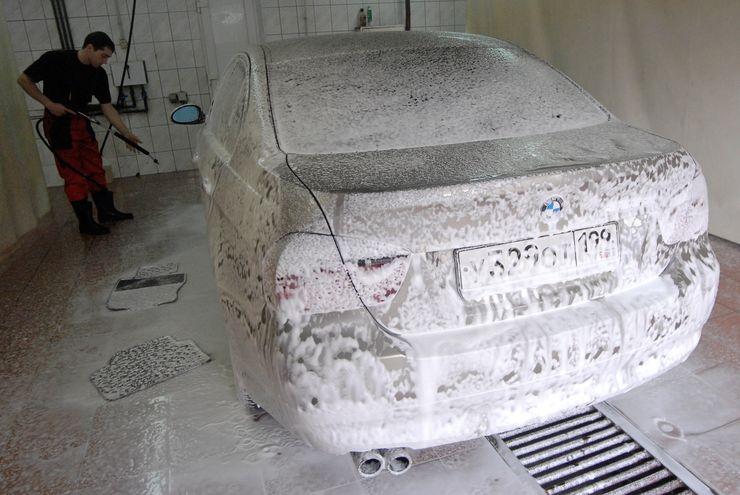
Manual transmission oil change
Content
The mineral base is natural oil, from which, by simple distillation and removal of paraffins, fuel oil of a certain viscosity is obtained. Such oils do not last long, react poorly to high or low temperatures, but are very cheap.
One of the differences between a mechanical transmission and any type of automatic transmission is reliability, because many boxes run 300–700 thousand km before overhaul, but this is only possible if regular and correct oil changes are carried out in the manual transmission.
How a mechanical transmission works
The basis of this type of gearbox is a gear transmission of constant mesh, that is, the driving and driven gears of each speed are constantly connected to each other. In this case, the driven gear is not connected to the shaft, but is mounted on it through a needle bearing, due to which it rotates easily. Depending on the design of the box, oil enters them either from the outside or through a hole inside the shaft.

Car oil
Gear shifting occurs due to synchronizer clutches, which are connected to the shaft with teeth, but can move left or right. Gear couplings connect one or another driven gear to the shaft, engaging with it. The differential is installed both inside and outside the box, depending on the design of the manual transmission.
What does the oil do
The transmission oil (TM) in the box performs 2 functions:
- lubricates friction surfaces, reducing their wear;
- cools all parts, removing heat from the gears to the corrugated body of the unit, which acts as a radiator.
Oil creates an oil film on the working surface of rubbing parts that reduces friction, thanks to which a thin layer of hardened metal lasts for many decades. The additives and trace elements included in the oil increase lubricity, and in some cases even restore worn metal surfaces. As the speed and load increase, the surface temperature of the gears rises, so the transmission fluid heats up with them and heats the housing, which has a high ability to radiate heat. Some models are equipped with a radiator that reduces the temperature of the oil.
When the viscosity or other parameters of the transmission fluid do not meet the requirements set by the manufacturer of the unit, the effect of the oil on all rubbing parts changes. Regardless of how the influence of oil changes, the wear rate of rubbing surfaces increases and metal chips or dust enter the transmission fluid.
When overheated, the oil cokes, that is, it partially oxidizes, forming a hard soot, which gives the transmission fluid a black color. Oil soot often clogs the channels inside the shaft, and also reduces the lubricity of the transmission, so the more soot in the fluid, the higher the wear rate of rubbing parts. If the gears or other elements of the internal gearbox mechanism are severely damaged, filling in a new fluid no longer helps, because a thin layer of hardened metal has been destroyed, so the box needs a major overhaul.
How often to change the oil
With careful operation of the car, the oil in the transmission passes 50-100 thousand kilometers before being replaced, however, if the car is used to transport heavy loads or drive fast, it is better to halve the mileage. This slightly increases the cost of car maintenance, but prolongs the life of the manual transmission. If the mining drained when changing the oil in the manual transmission does not smell burnt and does not darken, then you change the TM in time, and the transmission resource is consumed at a minimum speed.
Change of oil
The procedure for changing the oil in a manual transmission includes 3 steps:
- selection of transmission fluid and consumables;
- waste drain;
- pouring new material.
Selection of transmission fluid
The operating instructions for most machines indicate a specific brand of oil, usually from partner enterprises of a manual transmission or car manufacturer. However, for a proper oil change in a manual transmission, it is not the brand or brand of fluid that is important, but its real characteristics, especially:
- SAE viscosity;
- API class;
- base type.
The SAE parameter describes the viscosity of the transmission fluid depending on two factors:
- outdoor temperature;
- temperature in the checkpoint.
The SAE of winter transmission fluid is specified in the format "xx W xx", where the first two digits describe the minimum outdoor temperature at which the oil retains its lubricity, and the second digits describe the viscosity at 100 degrees Celsius.
The API class describes the purpose of the oil, that is, for what type of gearboxes they are intended and are denoted by the letters GL followed by a number, which is the class. For passenger cars, oils of classes GL-3 - GL-6 are suitable. But, there are limitations, for example, only GL-4 is suitable for boxes with synchronizers made of non-ferrous metals, if you fill in GL-5, then these parts will quickly fail. Therefore, the manufacturer's instructions must be strictly followed.
The type of base is the material from which the TM is made, as well as the technology for its production. There are 3 types of base:
- mineral;
- semi-synthetic;
- synthetic.
The mineral base is natural oil, from which, by simple distillation and removal of paraffins, fuel oil of a certain viscosity is obtained. Such oils do not last long, react poorly to high or low temperatures, but are very cheap.
A semi-synthetic base is a mixture of mineral and synthetic components in various proportions, it combines better performance parameters than mineral water and a relatively low cost.
How to choose gearbox oil
Find a paper or electronic instruction manual for your vehicle and look at the requirements for TM there. Then find oils that fully meet these requirements and choose the one you like best. Some car owners prefer to take TM only of foreign production under well-known brands, fearing that Russian oils are much worse in quality. But leading concerns, such as GM, the Renault-Nissan-Mitsubishi alliance and others, have approved oils from Lukoil and Rosneft, which indicates the high quality of TMs from these manufacturers.

Oil for manual transmission of a car
Therefore, to change the oil in the gearbox of a mechanic, it is not the TM brand that is important, but its originality, because if the purchased liquid is really produced at the Rosneft or Lukoil factories, then it is no worse than liquids under the Shell or Mobile brands.
Draining mining
This operation is performed in the same way on all machines, but vehicles with low clearance are preliminarily rolled into a pit, overpass or lift, and vehicles with high clearance do not need this, because you can lie on the ground to the manual transmission drain plug.
To drain the oil, proceed as follows:
warm up the box by driving the car for 3-5 km, or leaving the engine to idle for 5-10 minutes;
- if necessary, roll the car onto a pit, overpass or lift;
- remove the protection of the engine and gearbox (if installed);
- substitute a clean container to receive mining;
- unscrew the drain plug;
- wait until the waste liquid is completely drained;
- if necessary, replace the O-ring or plug;
- Wipe the oil drain hole and the area around it with a clean rag;
- screw in the plug and tighten to the recommended torque.
This sequence of actions is applicable to any mechanical transmissions, including those in which the differential is installed separately (oil is drained from the differential according to the same algorithm). On some cars, there is no drain plug, so they remove the pan, and when it is attached to the box, they put a new gasket or use sealant.
Filling with new fluid
New oil is supplied through the filler hole, located so that, with the optimal amount of liquid, it will be at the level of the lower edge of this hole. If for some reason this is not possible, for example, it is difficult to bring the filling syringe or hose to the hole, it is opened to control the level, and HM is fed through the vent (breather).
Fluid is supplied to the transmission using one of the following tools:
- filling system;
- oil-resistant hose with funnel;
- large syringe.
The filling system is not compatible with all transmissions, if it is not suitable for some box, you will have to install the appropriate adapter. The oil resistant hose is compatible with all transmissions, however 2 people are needed for this filling. It is possible to apply TM with a syringe even alone, but it is not always convenient to insert it into the filler hole.
Conclusion
Changing the oil in a manual transmission extends the life of the box by reducing wear on all rubbing parts. Now you know:
- what steps need to be taken to change the oil in a manual transmission;
- how to choose a new transmission fluid;
- how to merge mining;
- how to put in new grease.
Acting in this way, you can independently, without contacting a car service, change TM in any mechanical transmission.

